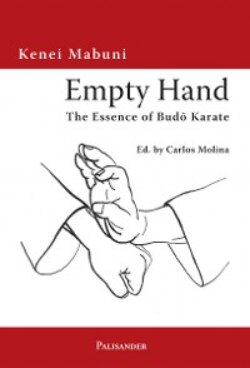Читать книгу Empty Hand - Kenei Mabuni - Страница 24
The Kata of the Shuri-te
ОглавлениеKarate is a system of self-defense techniques which have been developed on Okinawa since the 17th century at the beginning of the Tokugawa era and passed on secretly to the following generations. It was used to fight with empty hands against opponents armed with swords and other weapons in times when the lords of Satsuma ruled over the Ryūkyū Islands and did not allow the natives to possess weapons and suppressed any resistance. That is why in Ryūkyū kobudō only agricultural tools were used as weapons.
Furthermore, and unlike to the sword techniques or jūjutsu, which were supported by the Tokugawa government in Edo and by the daimyōs in their fiefs, no written records existed about karate. The masters of karate had to transform the technical experience and ideas they had acquired in many dangerous situations into kata, i.e. certain sequences of movements that were rather different of those practiced in other martial arts. They looked similar to traditional Okinawa “boxing dances” called genkotsu odori. Punches, kicks and blocking techniques are carried out as a sequence of attack and defense movements against an imaginary opponent. This way of practicing might also have been helpful to camouflage the true character of the exercises. So the kata became the legacy of the Okinawan karate. The karate student acquires the techniques and the spirit of karate by exercising kata. In the old days, learning the te always meant practicing kata. The masters arranged the kata according to their own experience and understanding. The Ishimine no Passai, for example, is suitable for fighting against small opponents. So it can be supposed that master Ishimine was not a small person. There are five different variations of the Passai kata named after Itosu, Matsumura, Matsumora, Tomari and Ishimine.
Except for the great masters Itosu and Higaonna, it was quite normal for a karate master to teach only one kata. Many of the kata used in our days in the Itosu style are named after masters or places they came from like the Chatan Yara no Kōsōkun, Tomari no Passai, Matsumura no Passai and Ishimine no Passai. Tomari is the name of a place.35 Matsumura and Ishimine were martial arts teachers. Chatan Yara no Kōsōkun means the Kōsōkun kata, created by master Yara from the village Chatan. This kata, which recently has become rather popular in competitive karate, is the most representative one for the Shuri-te. However, in the form transmitted by Yara it contains a circle block technique (mawashi uke) which is very typical for the Naha-te. It was modified considerably to be used as a competition kata. Anyway, the legitimate kata of Shuri-te are the ones taught by master Itosu.
